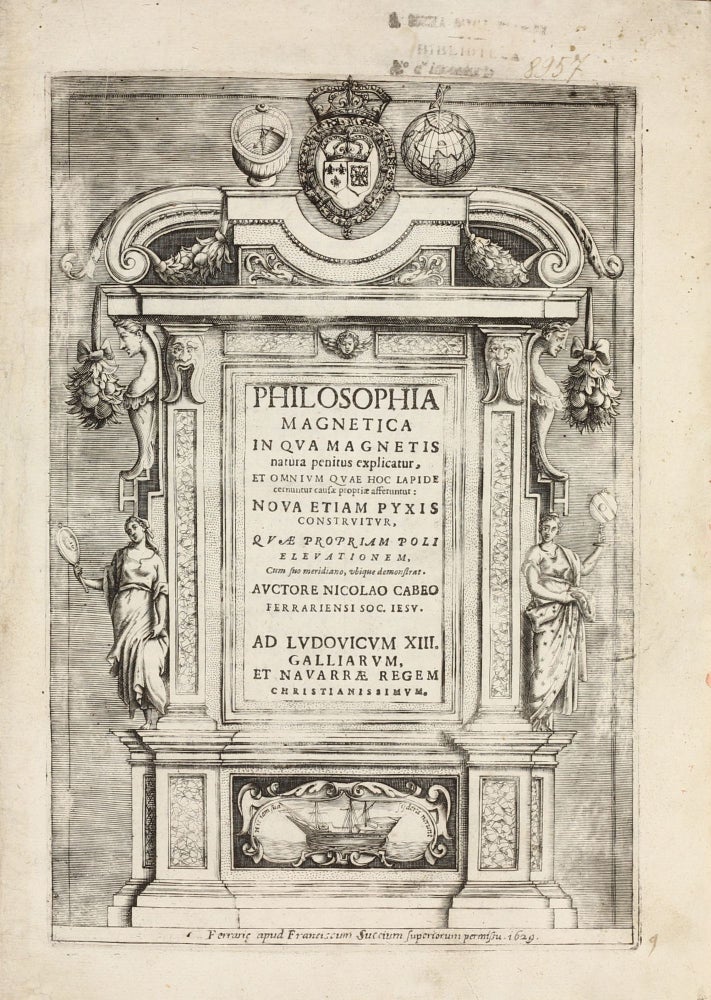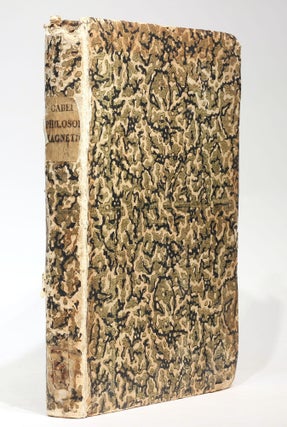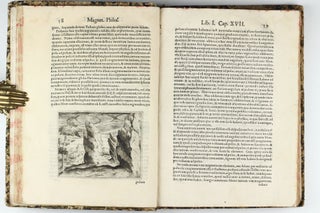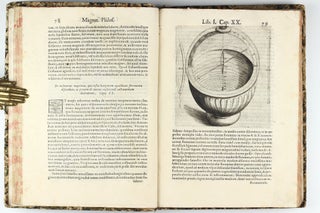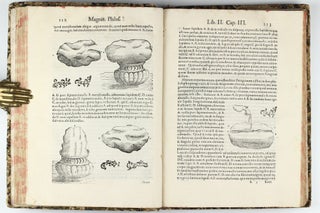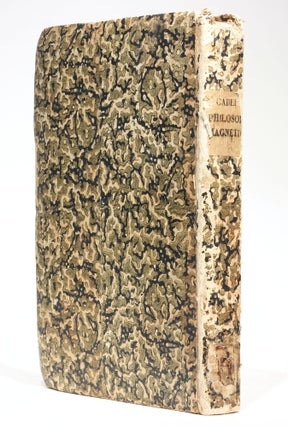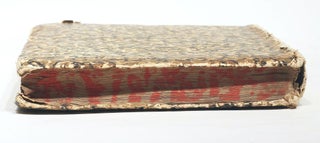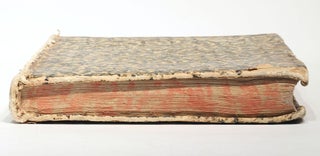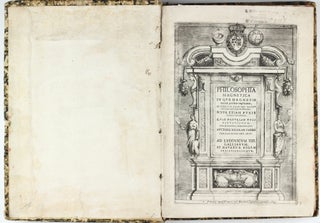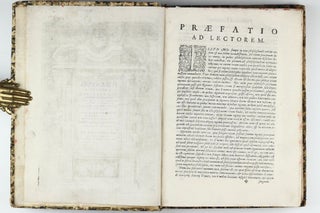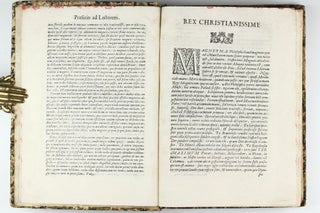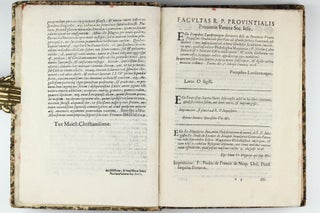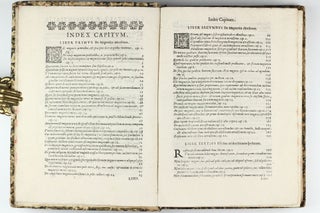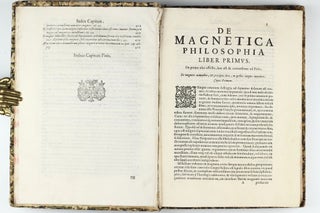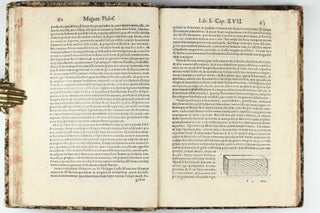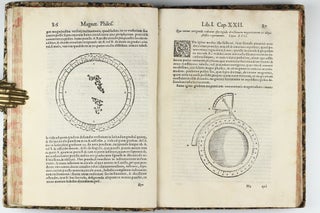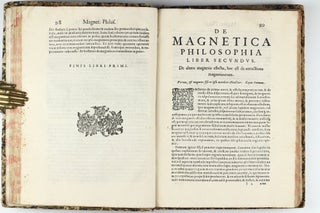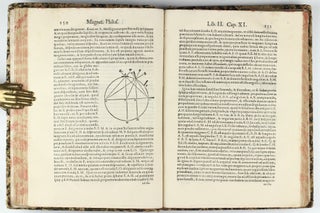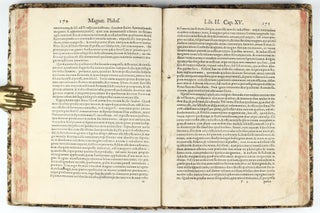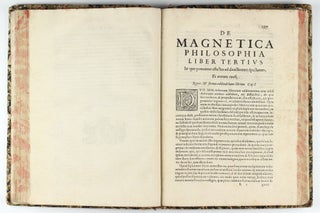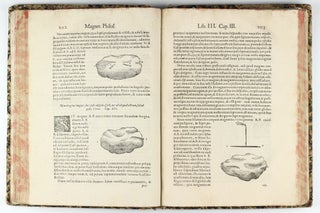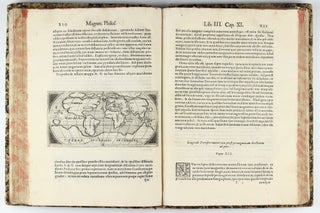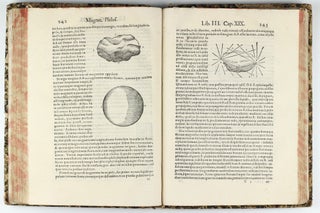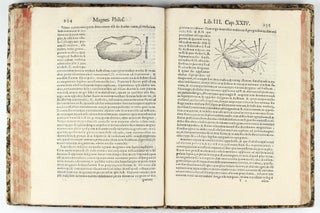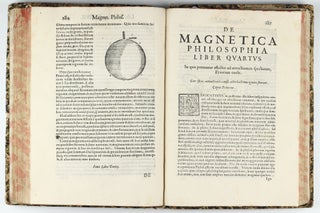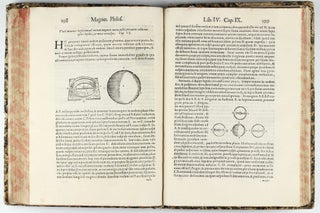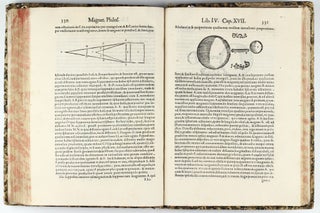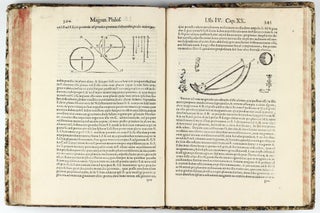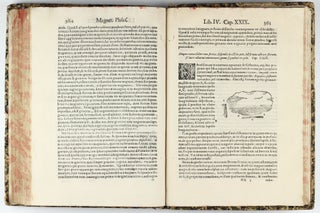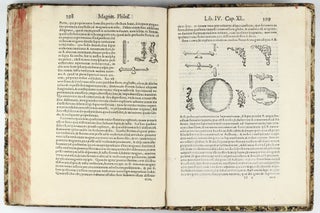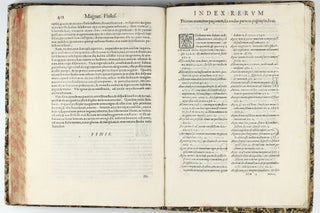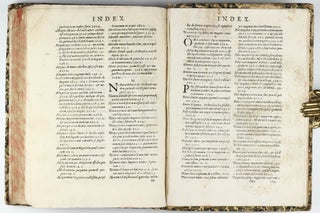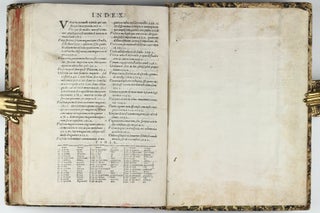A milestone work on magnetism
Philosophia magnetica in qua magnetis natura penitus explicatur, et omnium quae hoc lapide cernuntur causae propriae afferuntur.
Ferrara: Francesco Succio, 1629.
1st Edition. Hardcover. Very Good. Item #003274
Folio (315 x 225 mm). [16], 412, [12] pp., engraved architectural title, 4 small engravings, including a world map (repeated), woodcut initials, head- and tailpieces, and nearly 240 woodcut text illustrations and diagrams. 18th-century Italian xylographic cardboard binding, ink-lettered paper label to spine, red-marbled edges (wear and minor chipping to hinges, extremities and paper label, corners bumped and scuffed, spine rubbed). Internally only little browned, leaves P2 and Nn1 somewhat soiled, occasional minor spotting, a little worming to pastedowns and gutter of a few leaves, but generally quite crisp and clean. Provenance: old faint library stamp to title. A fine, wide-margined copy in untouched binding. ----
Ferguson I, 136; Riccardi I, 205; Wheeler Gift 97. FIRST EDITION, FIRST ISSUE. Cabei (1586-1650) was a Jesuit father born in Ferrara and a contemporary of Athanasius Kircher, who taught theology and mathematics in Parma and then in Genoa. His ''Philosophia magnetica' is a milestone in studies on magnetism, containing the first printed account of electrical repulsion.
Niccolo Cabeo (1586-1650), critically examines Gilbert's discoveries and theories, opposing the latter's views on terrestrial magnetism and sympathetic telegraphy. First edition, first issue, of the first work to discuss electrical repulsion, 'perhaps the most significant discovery of the century following Gilbert' (Wolf A History of Science (1939)). In fact, this book is only the second, after Gilbert's De Magnete, to discuss the phenomenon of magnetism. Cabei explored telegraphic communication by means of magnetized needles and provided the first visual image of the sympathetic telegraph: "Perhaps the most important discovery of the century following Gilbert" (Wolff). The first issue from Ferrara is distinguished from the second (issued at Cologne in the same year) by the arms of Louis XIII at the head of the title and its dedication to "Rex Christianissime".
Cabeo was the first to notice electrical repulsion, 'perhaps the most significant discovery of the century following Gilbert' (Wolf). In the presentation inscription to Corado, Cabeo praises him fulsomely for his knowledge and wisdom. The variant engraved title appears to represent an early state, with the text altered to make room for a brief inscription naming Corado in manuscript, and before the Jesuit emblem was added to the shield above. - Visit our website to see more images!
Price: 8,500 € * convert currency
Delivery time up to 10 days. For calculation of the latest delivery date, follow the link: Delivery times
Lieferzeit max. 10 Tage. Zur Berechnung des spätesten Liefertermins siehe hier: Lieferzeiten


